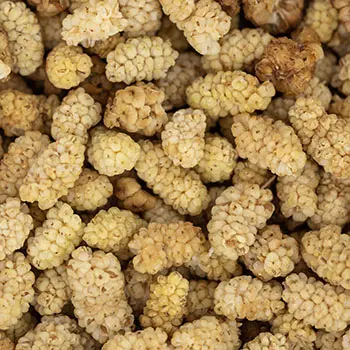Winter brings unique food security challenges. Prices soar. Demand Increases. Panic Sets. I’ve tracked this pattern for years! Here are some foods to stock up on this winter.
However, smart stockpiling before the cold hits has put my mind at ease, often slashing my grocery bills by up to 40%. Magic? Not at all.
Just stocking up on the right foods does the trick. Here are my favorites:
Jerusalem Artichokes (Sunchokes)
Jerusalem artichokes were a breakthrough discovery during a harsh winter in 2015. After a storm cut us off for three weeks, these tubers kept our family fed. Over the years, I’ve perfected their storage.
The key is understanding their unique properties. Unlike potatoes, sunchokes keep respirating after harvest, so they need precise humidity control. I’ve created a three-tier storage system based on their intended use.
Short-term storage (1-2 months)
Wrapped in slightly damp burlap in my root cellar’s upper shelves, these are for immediate cooking. The higher position’s slightly warmer temperature (40-45°F) maintains its crisp texture while preventing sprouting.
Mid-term storage (2-4 months)
These go into my layered sand bins. Each layer consists of: damp sand (not wet), a single layer of sunchokes, and more sand.
Critical temperature range: 32-38°F. I learned the hard way that warmer temperatures trigger sprouting, while colder ones damage their delicate cell structure.
Long-term storage (4-6 months)
For extended storage, I use a modified hydro cooling technique followed by careful curing.
After harvest, I briefly dip them in 33°F water, dry them thoroughly, and then cure them at 55°F for one week. This process toughens their skins and extends storage life significantly.
Rutabagas
Rutabagas entered my winter storage arsenal after a chance encounter with my elderly neighbor.
She shared her family’s Norwegian preservation techniques, which have been passed down through generations.
The secret, I learned, isn’t just in the storage but in the harvest timing. My root cellar maintains these veggies from October through May, though they’re sweetest in the depths of January.
To increase shelf life, I have installed a small fan in my root cellar. Proper air circulation prevents the musty flavor development that turns many people away from rutabagas. I run it for 15 minutes every 4 hours.
Celeriac (Celery Root)
Despite its gnarly appearance, celeriac is a winter storage champ. This root vegetable brings a bright celery flavor to dishes long after fresh celery becomes scarce and expensive. The key to success lies in proper storage techniques.
For optimal preservation, use the damp sawdust method.
Layer clean sawdust in a wooden crate, dampen it to the consistency of a wrung-out sponge, and space roots so they don’t touch. Maintain temperatures between 32-40°F with 90-95% humidity for best results.
| Storage Method | Shelf Life | Temperature |
|---|---|---|
| Damp sawdust | 4-6 months | 32-40°F |
| Root cellar | 3-4 months | 35-40°F |
| Refrigerator | 2-3 weeks | 40°F |
Beyond soups and stews, try it roasted with other root vegetables, grated raw into winter slaws, or mashed with potatoes for a sophisticated twist. Regular checks prevent spoilage – use any softening roots first and maintain proper ventilation to prevent mold growth.
Buckwheat Groats
Buckwheat groats are quick to cook and packed with nutrition. These pyramid-shaped kernels provide complete protein and cook in just 15 minutes, making them ideal for busy winter nights.
For long-term storage, use mylar bags with oxygen absorbers, sealed in food-grade buckets. This keeps groats fresh for 12+ months and preserves their nutty flavor. Store in a cool, dark place to prevent rancidity.
Related: This Common Mistake Can Ruin Your Entire Food Stockpile
Here’s how to cook groats quickly: Rinse them until the water runs clear, then use a 2:1 water-to-groat ratio. Bring the water to a simmer, cover, and cook for about 15 minutes. Once done, remove from heat and let it rest for 5 minutes to absorb any remaining moisture.
Buckwheat is great in both sweet and savory dishes. Try it as morning porridge with honey and dried fruit, or a savory pilaf with roasted winter vegetables. Its versatility makes it a must-have pantry staple.
Farro
Farro, an ancient wheat grain, adds great versatility to winter meals. Unlike other grains, it keeps its chewy texture no matter how you cook it, making it nearly foolproof.
Storage is easy—keep it in airtight containers with bay leaves to deter pests. Store in a cool, dark cabinet for 6-8 months. Over time, the nutty flavor develops even more complexity.
Related: 8 Foods You Should Never Keep in a Fridge
Farro is a versatile grain perfect for many dishes. It adds texture and depth to hearty soups and stews. It also shines in grain salads, especially when mixed with roasted vegetables for a filling meal. For breakfast, farro makes a nutritious porridge with dried fruits. As a side dish, season it with herbs and garlic for a flavorful addition to any meal.
When cooking, use the pasta method – boil in plenty of water until tender but chewy, about 25-30 minutes, then drain. This prevents the sticky results that can plague other grains.
Black Garlic
Transform ordinary garlic into something extraordinary through careful aging. The process creates sweet, umami-rich cloves that add depth to winter dishes. While making black garlic requires patience, the results justify the wait.
To age garlic, start with clean, whole bulbs. Place them in a rice cooker set to the ‘warm’ setting to maintain a steady temperature. Let the garlic age for 3-4 weeks.
Keep the temperature between 140-170°F during this time to ensure proper aging. This method enhances the garlic’s unique flavor and texture.
Related: Never Buy Garlic Again!
Store finished black garlic in airtight containers in the refrigerator for 3-4 months. For longer storage, puree with oil and freeze in ice cube trays. Use as a flavor concentrate in sauces, marinades, and dressings.
Seaweed and Persimmons
Don’t let inland living limit your winter pantry. Dried seaweed, like wakame and dulse, provides essential minerals when fresh greens are scarce. Store them in airtight containers away from light to keep them fresh for months.
For persimmons, dry firm Fuyu varieties in a dehydrator until they’re leathery but still pliable. Store in airtight containers with moisture absorbers. Both fruits and seaweed offer valuable nutrients for winter meals.
Dried Mulberries
These naturally sweet berries are winter treasures when dried and stored properly. Harvest them at peak ripeness and dry thoroughly in a dehydrator or by sun-drying in suitable climates.
Vacuum sealing is ideal for storage, and preserving flavor and nutrients for 6-12 months. Store dried mulberries in smaller portions to reduce air exposure.
They offer essential antioxidants and natural sweetness when fresh fruit is scarce. Use them in granola, or baking, or enjoy them as a healthy snack. Regular rotation ensures maximum freshness.
Storage Systems That Work
Here’s what works in our homestead:
| Storage Area | Temperature | Humidity | Best For |
|---|---|---|---|
| Root Cellar | 32-40°F | 85-95% | Root vegetables, apples |
| Cool Pantry | 50-60°F | 60-70% | Dried goods, oils |
| Dry Storage | 65-70°F | 35-45% | Grains, dried fruits |
Hard-Won Food Storage Wisdom
After years of stocking up for winter, I’ve learned some expensive lessons about food storage that’ll save you serious headaches.
Let me share what I learned the hard way before I got it right.
First off, never trust plastic containers for long-term storage! I watched in frustration as mice chewed through my supposedly “rodent-proof” bins and destroyed 50 pounds of grain. Now, I only use metal or glass containers. They’re worth every penny for the peace of mind they bring.
Then came the lesson in humidity. An improperly ventilated storage space turned my winter squash harvest into a moldy mess. I’ve since learned to keep the humidity at a steady 55% and monitor it closely. Trust me, your stored foods will thank you for it!
For rotating my stock, I’ve developed a simple but effective color-coded system. Green tags go on the newest items, yellow for those that are middle-aged, and red for anything that needs to be used up soon. This system has saved me from wasting food and helped keep my pantry well-organized and my winter stores fresh.
Would you like me to share more specific details about any of these methods or storage systems? I’d be happy to dive deeper into the technical aspects of any particular preservation technique.
Leave a comment below!
Signs We’ll Soon Be Eating Depression-Era Foods
How to Build a Food Stockpile That Never Spoils (Video)
Veggies You Only Plant Once And Harvest Forever
























